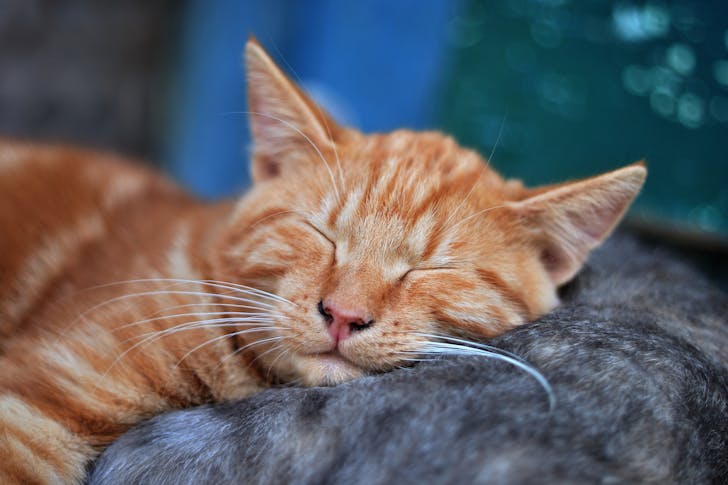Most cat owners know their pets spend a lot of time asleep, but fewer realize how they sleep might matter. A recent study looked at over 400 videos and found that cats aren’t just napping at random.
The study finds that about two-thirds prefer lying on their left side. Researchers from a new study published in Current Biology analyzed 408 unedited YouTube videos. They found that about 65% of cats lie on their left side when sleeping for at least 10 seconds. Only 35% chose the right.
The researchers filtered out any flipped or mirrored videos. They only counted clips where cats were fully lying on their sides. It was a clear pattern that raised deeper questions about why left-sided sleep might help cats stay safer.
The left eye connects to the brain’s right hemisphere. This part of the brain handles quick reactions, spatial awareness, and spotting threats. Sleeping on the left side leaves the left eye exposed, feeding visual info straight into that quick-thinking side.
When cats wake up, their brains are already ready. If something dangerous is nearby, the cat can notice it quickly and react without delay.
Cats rest for 12 to 16 hours a day. That is half, sometimes two-thirds, of their entire life. During those hours, their bodies are still. Muscles relax. Ears flick less. They are easy targets for anything that sees them as prey.
So, how do cats sleep that much without getting caught? Part of the answer might be side-sleeping. By keeping the left side down and the left visual field open, cats can wake up into a more alert state.
The study also points to where cats like to sleep. Many clips showed cats resting on elevated surfaces like cat trees, couches, and even bookshelves. Sleeping high up gives them an edge. They can scan the room faster, spot threats earlier, and avoid any surprises.
When combined with left-side sleeping, the cat gets a double benefit: A better view and a faster brain response. However, pregnant cows often rest on their left side. Horses, dogs, and birds also show brain-based preferences in movement and rest.
Some people guess that paw preference might influence sleep posture. Maybe cats who favor the left paw also sleep on the left. But the study ruled that out. There is no link between paw use and sleep side. “Pawedness,” as it is called, just doesn’t match up.

Pixabay / Pexels / When a cat wakes, the right side of the brain helps it snap into action. It pulls in details from the open visual field, filters out distractions, and focuses on movement or sound.
That process starts in a matter of seconds!
So, if a noise wakes a sleeping cat, the brain is already scanning before the body moves. Sleeping on the left lets that process happen faster. It is a small shift that gives cats a real edge in tight moments.
Cats may hunt mice, but they are also hunted by bigger animals. That balance shaped their habits. Being alert during sleep helped wild cats survive. The same instincts are still at work in the house cat napping on your couch.
This study adds to growing research about how animals’ brains are wired. Left-sided sleep connects to deep neurological patterns that developed to keep animals safe and aware.
